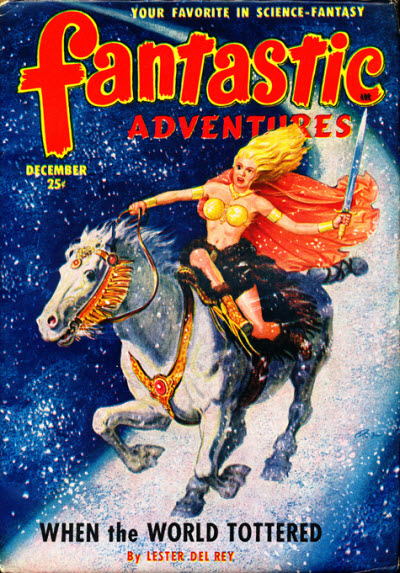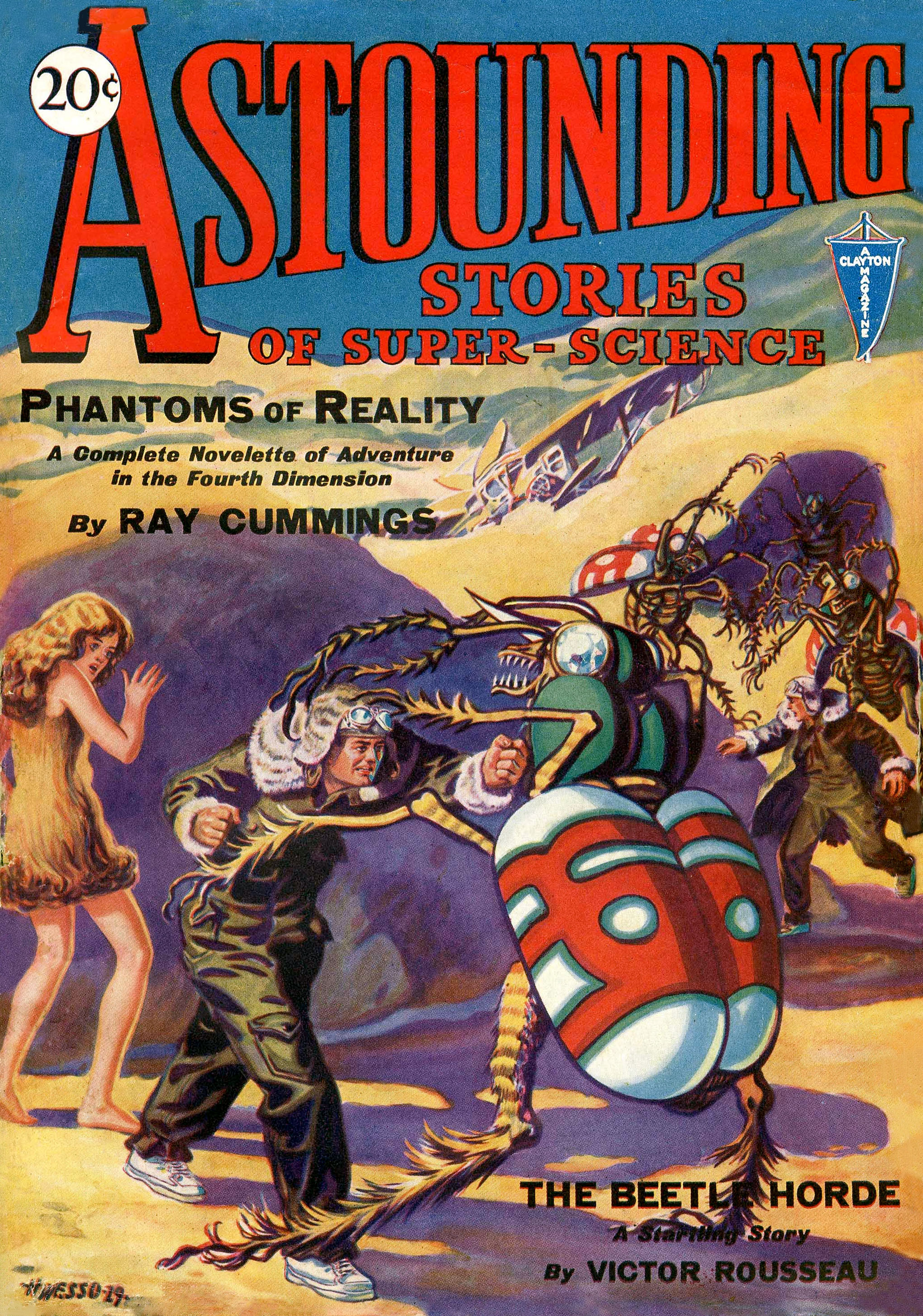|
Lester Del Rey
Lester del Rey (June 2, 1915 – May 10, 1993) was an American science fiction author and editor. He was the author of many books in the juvenile Winston Science Fiction series, and the fantasy editor at Del Rey Books, the fantasy and science fiction imprint of Ballantine Books, subsequently Random House, working for his fourth wife Judy-Lynn del Rey’s imprint, Del Rey. Biography Original name Del Rey often told people that his real name was Ramon Felipe Alvarez-del Rey (and sometimes facetiously even Ramón Felipe San Juan Mario Silvio Enrico Smith Heartcourt-Brace Sierra y Alvarez del Rey y de los Verdes Stableford, Brian and Clute, John.del Rey, Lester, '' Encyclopedia of Science Fiction''. Retrieved September 9, 2020.). However, his sister has confirmed that his name was in fact Leonard Knapp. He also claimed that his family was killed in a car accident in 1935. In reality, the accident only killed his first wife. Career Writing career Del Rey first starte ... [...More Info...] [...Related Items...] OR: [Wikipedia] [Google] [Baidu] [Amazon] |
:Template:Infobox Writer/doc
Infobox writer may be used to summarize information about a person who is a writer/author (includes screenwriters). If the writer-specific fields here are not needed, consider using the more general ; other infoboxes there can be found in :People and person infobox templates. This template may also be used as a module (or sub-template) of ; see WikiProject Infoboxes/embed for guidance on such usage. Syntax The infobox may be added by pasting the template as shown below into an article. All fields are optional. Any unused parameter names can be left blank or omitted. Parameters Please remove any parameters from an article's infobox that are unlikely to be used. All parameters are optional. Unless otherwise specified, if a parameter has multiple values, they should be comma-separated using the template: : which produces: : , language= If any of the individual values contain commas already, add to use semi-colons as separators: : which produces: : , pseu ... [...More Info...] [...Related Items...] OR: [Wikipedia] [Google] [Baidu] [Amazon] |
Ballantine Books
Ballantine Books is a major American book publisher that is a subsidiary of German media conglomerate Bertelsmann. Ballantine was founded in 1952 by Ian Ballantine with his wife, Betty Ballantine. Ballantine was acquired by Random House in 1973, which in turn was acquired by Bertelsmann in 1998 and remains part of that company. Ballantine's original logo was a pair of mirrored letter Bs back to back, later changing to two Bs stacked to form an elaborate gate. The firm's early editors were Stanley Kauffmann and Bernard Shir-Cliff. History Following Fawcett Publications' controversial 1950 introduction of Gold Medal paperback originals rather than reprints, Lion Books, Avon and Ace also decided to publish originals. In 1952, Ian Ballantine, a founder of Bantam Books, announced that he would "offer trade publishers a plan for simultaneous publishing of original titles in two editions, a hardcover 'regular' edition for bookstore sale, and a paper-cover, 'newsstand' size, ... [...More Info...] [...Related Items...] OR: [Wikipedia] [Google] [Baidu] [Amazon] |
Weird Tales
''Weird Tales'' is an American fantasy and horror fiction pulp magazine founded by J. C. Henneberger and J. M. Lansinger in late 1922. The first issue, dated March 1923, appeared on newsstands February 18. The first editor, Edwin Baird, printed early work by H. P. Lovecraft, Seabury Quinn, and Clark Ashton Smith, all of whom went on to be popular writers, but within a year, the magazine was in financial trouble. Henneberger sold his interest in the publisher, Rural Publishing Corporation, to Lansinger, and refinanced ''Weird Tales'', with Farnsworth Wright as the new editor. The first issue to list Wright as editor was dated November 1924. The magazine was more successful under Wright, and despite occasional financial setbacks, it prospered over the next 15 years. Under Wright's control, the magazine lived up to its subtitle, "The Unique Magazine", and published a wide range of unusual fiction. Lovecraft's Cthulhu mythos stories first appeared in ''Weird Tales'', starting ... [...More Info...] [...Related Items...] OR: [Wikipedia] [Google] [Baidu] [Amazon] |
The Science Fiction Hall Of Fame, Volume One, 1929–1964
''The Science Fiction Hall of Fame, Volume One, 1929–1964'' is a 1970 anthology of English language science fiction short stories, edited by Robert Silverberg. Author Lester del Rey said that "it even lives up to its subtitle", referring to the volume's boast of containing "The Greatest Science-Fiction Stories of All Time". It was first published by Doubleday (publisher), Doubleday and subsequently reprinted by Avon (publisher), Avon Books in July 1971 (Library of Congress Card Catalog Number: 70-97691; ), and later by Orb Books, Orb. The book was first published in the UK in 1971 by Victor Gollancz Ltd and in paperback by First Sphere Books in 1972 (in two volumes, split after "First Contact"). The content of the book was decided by a vote of the members of the Science Fiction Writers of America, choosing among short stories (up to 15,000 words long) that predated the Nebula Awards. Among the top 15 vote-getters, one (Arthur C. Clarke's "The Star (Clarke short story), Th ... [...More Info...] [...Related Items...] OR: [Wikipedia] [Google] [Baidu] [Amazon] |
Helen O'Loy
"Helen O'Loy" is a science fiction short story by American writer Lester del Rey (1915–1993), originally published in 1938 in ''Astounding Science Fiction''. It was subsequently published many times in various collections or anthologies. The latest publication was in 2021, in the anthology ''We, Robots''. Plot summary Two young men, a mechanic, Dave, and a medical student, Phil, collaborate on modifying a household robot, originally meant only to cook and clean. They are more successful than they intended; despite the robot's household programming, it develops emotions. The robot, named "Helen O'Loy" (a play on Helen of Troy and "alloy"), falls in love with Dave. Dave initially avoids her and rejects her advances, but after some time he marries her and they live together on his farm. Over the years Phil assists her in artificially aging her features to match the changes that occur in her human husband. When Dave inevitably dies, she sends a letter to Phil saying that she in ... [...More Info...] [...Related Items...] OR: [Wikipedia] [Google] [Baidu] [Amazon] |
John W
John is a common English name and surname: * John (given name) * John (surname) John may also refer to: New Testament Works * Gospel of John, a title often shortened to John * First Epistle of John, often shortened to 1 John * Second Epistle of John, often shortened to 2 John * Third Epistle of John, often shortened to 3 John People * John the Baptist (died ), regarded as a prophet and the forerunner of Jesus Christ * John the Apostle (died ), one of the twelve apostles of Jesus Christ * John the Evangelist, assigned author of the Fourth Gospel, once identified with the Apostle * John of Patmos, also known as John the Divine or John the Revelator, the author of the Book of Revelation, once identified with the Apostle * John the Presbyter, a figure either identified with or distinguished from the Apostle, the Evangelist and John of Patmos Other people with the given name Religious figures * John, father of Andrew the Apostle and Saint Peter * Pope John (disambigu ... [...More Info...] [...Related Items...] OR: [Wikipedia] [Google] [Baidu] [Amazon] |
Astounding Science Fiction
''Analog Science Fiction and Fact'' is an American science fiction magazine published under various titles since 1930. Originally titled ''Astounding Stories of Super-Science'', the first issue was dated January 1930, published by William Clayton, and edited by Harry Bates. Clayton went bankrupt in 1933 and the magazine was sold to Street & Smith. The new editor was F. Orlin Tremaine, who soon made ''Astounding'' the leading magazine in the nascent pulp science fiction field, publishing well-regarded stories such as Jack Williamson's '' Legion of Space'' and John W. Campbell's "Twilight". At the end of 1937, Campbell took over editorial duties under Tremaine's supervision, and the following year Tremaine was let go, giving Campbell more independence. Over the next few years Campbell published many stories that became classics in the field, including Isaac Asimov's ''Foundation'' series, A. E. van Vogt's '' Slan'', and several novels and stories by Robert A. H ... [...More Info...] [...Related Items...] OR: [Wikipedia] [Google] [Baidu] [Amazon] |
Golden Age Of Science Fiction
The Golden Age of Science Fiction, often identified in the United States as the years 1938–1946, was a period in which a number of foundational works of science fiction appeared in American genre magazines. Exemplars include the '' Foundation'' series of Isaac Asimov and the ''Future History'' series of Robert Heinlein, but the form included dozens of other authors. In the history of science fiction, the Golden Age follows the " pulp era" of the 1920s and '30s, and precedes New Wave science fiction of the '60s and '70s. The 1950s are, in this scheme, a transitional period. Robert Silverberg, who came of age then, saw the '50s as the true Golden Age. The age is often associated with the influence of editor John W. Campbell. According to Lester del Rey, "the result [of Campbell's editorship] was the so-called Golden Age of science fiction — the beginning of modern science fiction, which was capable of reaching beyond a small readership of gadget-loving hobbyists and science b ... [...More Info...] [...Related Items...] OR: [Wikipedia] [Google] [Baidu] [Amazon] |
Pulp Magazine
Pulp magazines (also referred to as "the pulps") were inexpensive fiction magazines that were published from 1896 until around 1955. The term "pulp" derives from the Pulp (paper), wood pulp paper on which the magazines were printed, due to their cheap nature. In contrast, magazines printed on higher-quality paper were called "glossies" or "slicks". The typical pulp magazine had 128 pages; it was wide by high, and thick, with ragged, untrimmed edges. Pulps were the successors to the penny dreadfuls, dime novels, and short-fiction magazines of the 19th century. Although many respected writers wrote for pulps, the magazines were best known for their lurid, exploitation fiction, exploitative, and sensational subject matter, even though this was but a small part of what existed in the pulps. Digest magazines and men's adventure magazines were incorrectly regarded as pulps, though they have different editorial and production standards and are instead replacements. Modern superhero Su ... [...More Info...] [...Related Items...] OR: [Wikipedia] [Google] [Baidu] [Amazon] |
Locus (magazine)
''Locus: The Magazine of The Science Fiction & Fantasy Field'', founded in 1968, is an American magazine published monthly in Oakland, California. It is the news organ and trade journal for the English-language science fiction and fantasy fields. It also publishes comprehensive listings of all new books published in the genres (excluding self-published). The magazine also presents the annual Locus Awards. '' Locus Online'' was launched in April 1997, as a semi-autonomous web version of ''Locus Magazine''. History Charles N. Brown, Ed Meskys, and Dave Vanderwerf founded ''Locus'' in 1968 as a news fanzine to promote the (ultimately successful) bid to host the 1971 World Science Fiction Convention in Boston, Massachusetts. Originally intended to run only until the site-selection vote was taken at St. Louiscon, the 1969 Worldcon in St. Louis, Missouri, Brown decided to continue publishing ''Locus'' as a mimeographed general science fiction and fantasy newszine. ''Locus'' succ ... [...More Info...] [...Related Items...] OR: [Wikipedia] [Google] [Baidu] [Amazon] |
The Encyclopedia Of Science Fiction
''The Encyclopedia of Science Fiction'' (''SFE'') is an English language reference work on science fiction, first published in 1979. It has won the Hugo Award, Hugo, Locus Award, Locus and BSFA Award, British SF Awards. Two print editions appeared in 1979 and 1993. A third, continuously revised, edition was published online from 2011; a change of web host was announced as the launch of a fourth edition in 2021. History First edition The first edition, edited by Peter Nicholls (writer), Peter Nicholls with John Clute, was published by Granada plc, Granada in 1979. It was retitled ''The Science Fiction Encyclopedia'' when published by Doubleday (publisher), Doubleday in the United States. Accompanying its text were numerous black and white photographs illustrating authors, book and magazine covers, film and TV stills, and examples of artists' work. Second edition A second edition, jointly edited by Nicholls and Clute, was published in 1993 by Orbit Books, Orbit in the UK ... [...More Info...] [...Related Items...] OR: [Wikipedia] [Google] [Baidu] [Amazon] |
John Clute
John Frederick Clute (born 12 September 1940) is a Canadian-born author and critic specializing in science fiction and fantasy literature who has lived in both England and the United States since 1969. He has been described as "an integral part of science fiction's history"Davis, MattheJohn Clute: Yakfests of the Empyrean, ''Strange Horizons,'' 18 September 2006. and "perhaps the foremost reader-critic of science fiction in our time, and one of the best the genre has ever known." He was one of eight people who founded the English magazine '' Interzone'' in 1982 (the others included Malcolm Edwards, Colin Greenland, Roz Kaveney, and David Pringle). Clute's articles on speculative fiction have appeared in various publications since the 1960s. He is a co-editor of '' The Encyclopedia of Science Fiction'' (with Peter Nicholls) and of ''The Encyclopedia of Fantasy'' (with John Grant), as well as the author of ''The Illustrated Encyclopedia of Science Fiction,'' all of which won ... [...More Info...] [...Related Items...] OR: [Wikipedia] [Google] [Baidu] [Amazon] |




